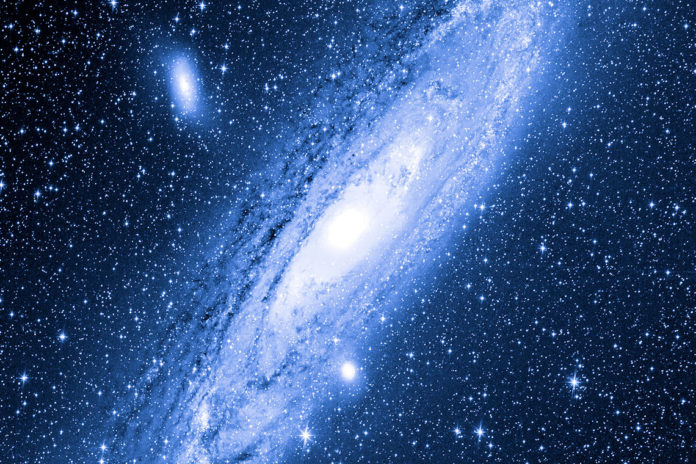A galaxy is the largest object in the universe. It is usually made up of billions of stars, dust and gas. The pull of gravity holds these objects together. These galactic stars orbit a distinct center of mass as seen in the photo of the Andromeda galaxy above.
There are hundreds of billions of galaxies in the universe. One estimate is that there are 500 billion galaxies in the universe. A galaxy is a very large object. The smallest galaxy may have about 10 million stars. The largest may contain over a trillion stars.
Galaxy Types
Our solar system is located in the Milky Way galaxy. There about 400 billion stars in the Milky Way. It is considered middle sized.
Galaxies are classified by their shape. The Milky Way is a spiral galaxy. There are three basic types of galaxies:
- spiral galaxies
- elliptical galaxies
- irregular galaxies
Origin of Galaxies
Right after the Big Bang, the universe was hot and uniform and there were no galaxies. However, the universe slowly began to cool down. Gases began to condense into areas filled with dark matter. Gases such as hydrogen and helium began to form in these areas.
Slowly, these gases began to condense into stars. Then, large groups of stars began to form into galaxies. The first galaxies began to appear when the universe was about 500 million years old. New stars are created if there is an adequate supply of gas and dust for star creation.
The Galactic Cluster
Galaxies are in constant motion as the universe expands. However, galaxies do interact with one another. Most galaxies become part of a larger cluster of galaxies due to gravitational attraction. There may be hundreds to tens of thousands of galaxies in such a cluster.
Within such clusters, it is not unusual for galaxies to collide with one another. Two galaxies may even merge into one. However, in the end, all stars go through their life cycle and eventually die. As the stars go out, galaxies will also share a similar fate.
Reflections
Vocabulary
- solar system
- galaxy
- galactic cluster
Notes
- There are three basic types of galaxies (spiral, elliptical and irregular).
- The earth is located in the Milky Way galaxy.
- Galaxies formed from the dust and gas created by the Big Bang.
Bibliography
- A Universe Study Guide
- About the Universe
- Galaxies Explained, National Geographic

